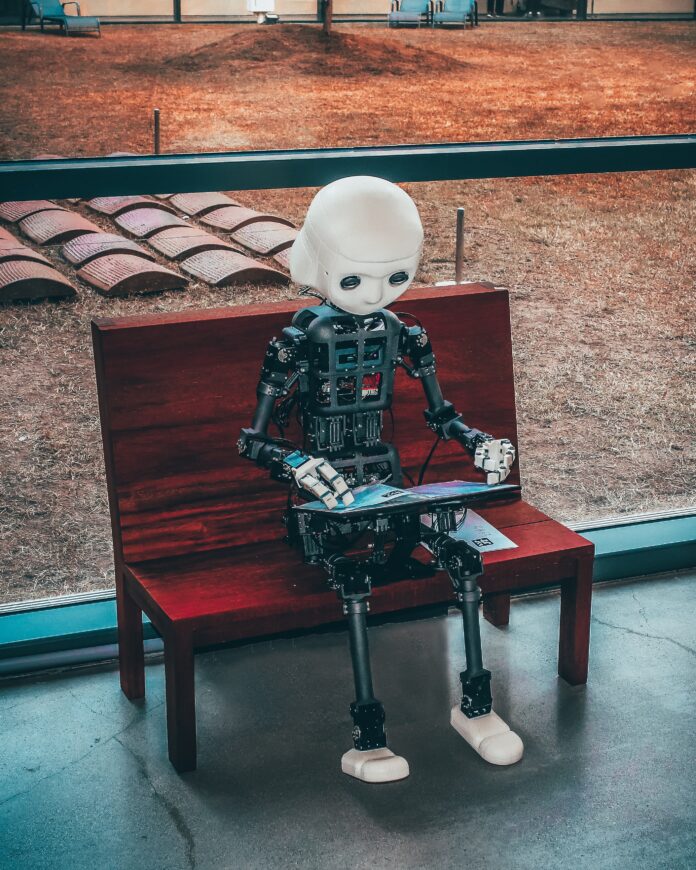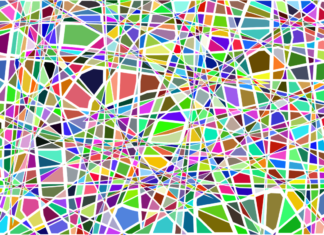Introduction:
Language models have come a long way in recent years, with advancements in deep learning and artificial intelligence (AI) leading to the development of highly sophisticated models capable of generating human-like text. One such groundbreaking model is Chaos GPT, which has gained significant attention in the field of natural language processing (NLP). Chaos GPT is a variant of the popular GPT (Generative Pre-trained Transformer) model, known for its ability to generate coherent and contextually relevant text. In this article, we will explore Chaos GPT in detail, delving into its architecture, training process, applications, limitations, and potential impact on various industries.
Understanding Chaos GPT:
At its core, Chaos GPT is a language model that uses deep learning techniques to generate text. It is based on the Transformer architecture, which was introduced by Vaswani et al. in the paper “Attention is All You Need” in 2017. The Transformer architecture has become a benchmark in NLP, as it addresses the limitations of recurrent neural networks (RNNs) in capturing long-range dependencies and allows for parallel processing, making it highly efficient for text generation tasks.
Chaos GPT, like other variants of GPT, is trained on a massive amount of text data, often referred to as the “pre-training” phase. During pre-training, the model learns to predict the next word in a sentence, given the context of the previous words. This helps Chaos GPT to capture the statistical properties and structures of the text data, enabling it to generate text that is coherent and contextually relevant.
One of the key differences between Chaos GPT and other GPT models is the introduction of a chaos parameter, which adds a random perturbation to the input during the generation process. This random perturbation introduces an element of unpredictability and creativity in the generated text, making Chaos GPT capable of producing more diverse and creative outputs.
Training Process of Chaos GPT:
The training process of Chaos GPT involves several stages, including pre-training and fine-tuning.
Pre-training:
In the pre-training phase, Chaos GPT is trained on a large corpus of text data, such as books, articles, websites, and other textual sources. The model learns to predict the next word in a sentence, given the context of the previous words, which helps it capture the statistical properties and structures of the text data.
Fine-tuning:
After pre-training, Chaos GPT is fine-tuned on a smaller dataset that is specific to the task or domain for which it is intended to be used. Fine-tuning helps the model to adapt to the specific language and style of the target domain, making it more effective in generating text that is relevant and coherent in that domain.
The training process of Chaos GPT requires substantial computational resources, including high-performance GPUs and large amounts of storage. It also requires careful selection and preprocessing of training data to ensure the quality and diversity of the data for effective training.
Applications of Chaos GPT:
Chaos GPT has the potential to revolutionize various industries and applications with its capabilities in generating human-like text. Some of the key applications of Chaos GPT include:
Content Generation:
Chaos GPT can be used to generate content for websites, blogs, social media, and other online platforms. It can generate text that is contextually relevant, coherent, and engaging, making it a valuable tool for content creators and marketers.
Creative Writing:
Chaos GPT can be used to assist in creative writing tasks, such as generating story ideas, character dialogues, and plot twists. It can provide writers with inspiration and new perspectives, helping them to overcome writer’s block and enhance their creativity.
Language Translation:
Chaos GPT has the potential to be used for language translation tasks. By inputting text in one language, Chaos GPT can generate translations in another language, making it a valuable tool for bridging language barriers and facilitating communication in multilingual contexts.
Chatbots and Virtual Assistants:
Chaos GPT can be used to develop chatbots and virtual assistants that can engage in human-like conversations with users. It can generate responses that are contextually relevant and coherent, providing users with a more interactive and personalized experience.
Code Generation:
Chaos GPT can be used to generate code snippets for programming tasks. It can generate code in different programming languages, making it a useful tool for developers to speed up their coding process and reduce repetitive tasks.
Data Generation:
Chaos GPT can generate synthetic data for machine learning tasks, such as training data for models, data augmentation, and data privacy protection. This can be particularly useful when real data is scarce or sensitive, providing a solution for data-related challenges in machine learning.
Personalized Marketing:
Chaos GPT can generate personalized marketing content, such as product descriptions, ad copies, and email templates, based on individual user preferences and behaviors. This can help businesses tailor their marketing messages to specific audiences, enhancing their marketing efforts.
Virtual Storytelling:
Chaos GPT can be used to generate interactive and dynamic stories in virtual storytelling experiences. It can create unique storylines, characters, and dialogues, providing users with immersive and engaging storytelling experiences in virtual reality (VR) and augmented reality (AR) environments.
Content Summarization:
Chaos GPT can generate summaries of long documents, articles, or news stories, providing users with concise and relevant summaries for quick understanding and decision-making.
Education and Learning:
Chaos GPT can be used as a tool for generating educational content, such as tutorials, explanations, and study materials. It can assist in personalized learning experiences, providing students with additional resources and explanations tailored to their individual needs.
Limitations of Chaos GPT:
Despite its capabilities, Chaos GPT also has limitations that need to be considered:
Ethical Concerns:
The generated content by Chaos GPT may sometimes raise ethical concerns, as it can potentially spread misinformation, hate speech, or biased content. Ensuring responsible and ethical use of Chaos GPT is crucial to avoid unintended consequences.
Lack of Contextual Understanding:
While Chaos GPT is capable of generating coherent text, it may still lack deep understanding of context, leading to errors or inconsistencies in the generated content. The model may not always capture the nuances, tone, or style of the input text accurately.
Over-Reliance on Training Data:
Chaos GPT’s performance is highly dependent on the quality and diversity of the training data. If the training data is biased, incomplete, or limited in scope, it can affect the model’s performance and generate biased or inaccurate content.
Potential for Misuse:
Chaos GPT can be misused for unethical purposes, such as generating fake news, plagiarism, or malicious content. Ensuring responsible and regulated use of Chaos GPT is essential to prevent misuse and potential harm.
Computational Resources:
Training and deploying Chaos GPT requires substantial computational resources, including high-performance GPUs, storage, and processing power. This may limit the accessibility and affordability of Chaos GPT for smaller organizations or individuals.
Legal and Intellectual Property Concerns:
The ownership and legal rights of the generated content by Chaos GPT may raise intellectual property concerns. Clarifying the legal implications and ownership of the generated content is important to avoid legal disputes.
Potential Impact of Chaos GPT:
Chaos GPT has the potential to revolutionize various industries and reshape the way we interact with text-based content. Its impact can be far-reaching and transformative in several areas:
Automation of Content Generation:
Chaos GPT can automate content generation processes in various industries, such as journalism, marketing, and e-commerce. This can lead to increased efficiency, reduced costs, and faster content production, enabling organizations to scale their content creation efforts.
Enhanced Creativity:
Chaos GPT can assist creative professionals, such as writers, artists, and designers, by generating new ideas, concepts, and inspirations. It can serve as a valuable tool for sparking creativity and pushing the boundaries of traditional content creation.
Improved Language Access:
Chaos GPT can break language barriers by providing translation services and generating content in multiple languages. This can facilitate communication, foster cultural exchange, and promote inclusivity in a globalized world.
Personalized User Experiences:
Chaos GPT can enable personalized user experiences in various applications, such as chatbots, virtual assistants, and content recommendations. This can enhance user engagement, satisfaction, and loyalty, leading to improved user interactions and outcomes.
Accelerated Innovation:
Chaos GPT can expedite the development of new products, services, and solutions by generating ideas, prototypes, and simulations. This can accelerate the pace of innovation and enable organizations to stay ahead of the competition.
Enhanced Learning and Education:
Chaos GPT can revolutionize the field of education by generating educational content, providing personalized learning experiences, and assisting in tutoring and mentoring. This can democratize access to quality education and enhance learning outcomes for students.
Data Generation and Privacy Protection:
Chaos GPT can generate synthetic data for machine learning tasks, reducing the reliance on real data and addressing data privacy concerns. This can enable organizations to develop machine learning models in a more secure and privacy-preserving manner.
Virtual Storytelling and Entertainment:
Chaos GPT can transform the entertainment industry by generating dynamic and interactive stories in virtual reality (VR) and augmented reality (AR) experiences. This can provide users with immersive and personalized storytelling experiences, revolutionizing the way stories are told and experienced.
Faster Content Summarization and Information Retrieval:
Chaos GPT can provide quick and concise summaries of long documents, articles, or news stories, helping users to digest information more efficiently. This can enable users to make informed decisions and stay updated with the latest information in a fast-paced digital world.
Enhanced Decision Making:
Chaos GPT can assist in decision-making processes by generating insights, recommendations, and predictions based on large amounts of data. This can empower organizations and individuals to make data-driven decisions in complex and dynamic environments.
Conclusion:
Chaos GPT is a cutting-edge language model that has the potential to revolutionize various industries and reshape the way we interact with text-based content. Its capabilities in generating coherent and contextually relevant text open up numerous opportunities for automation, creativity, personalization, innovation, and improved user experiences. However, it also comes with limitations and ethical concerns that need to be addressed to ensure responsible and ethical use of Chaos GPT. As Chaos GPT continues to evolve and advance, it is crucial for organizations, researchers, and policymakers to consider its potential impact, implications, and ethical considerations to harness its full potential for the benefit of society.






















